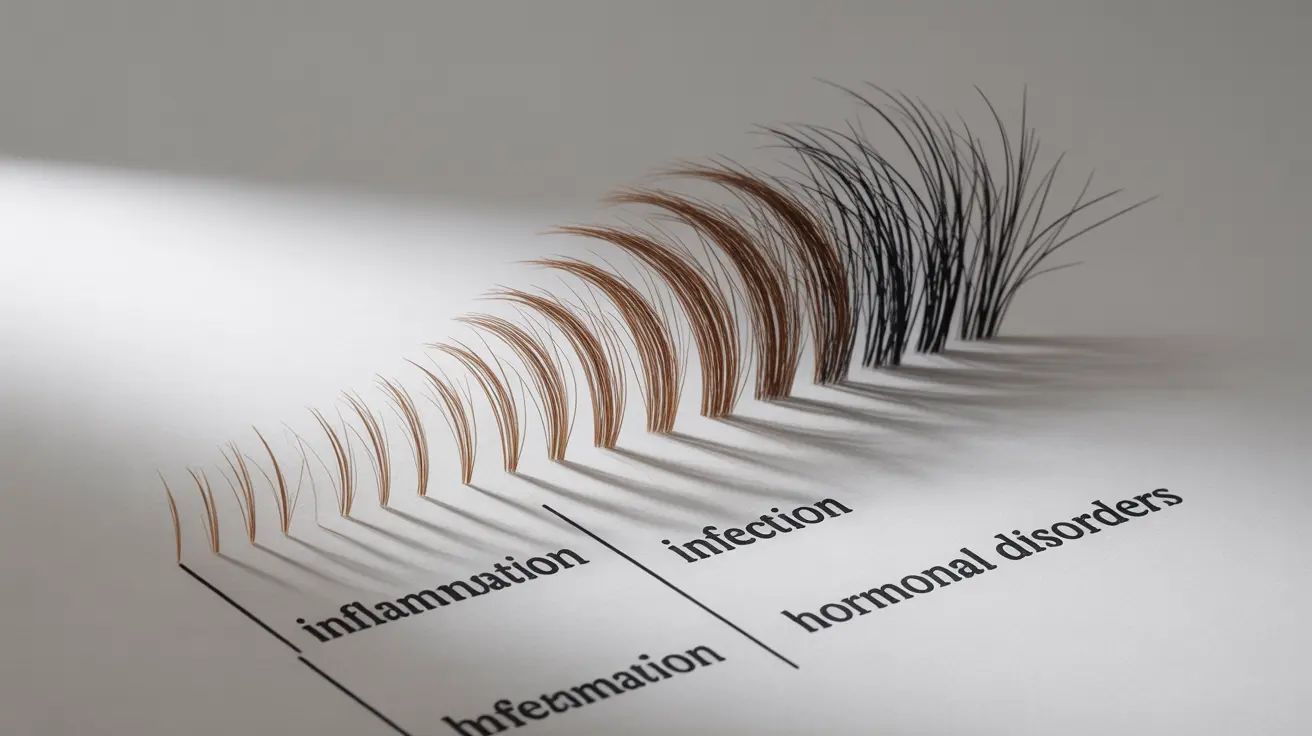Madarosis, the medical term for the loss of eyelashes or eyebrows, can be a concerning condition that affects both appearance and eye health. While some cases may be temporary, others can signal underlying medical conditions that require prompt attention. Understanding the causes, diagnosis process, and available treatments is crucial for anyone experiencing this condition.
What is Madarosis?
Madarosis specifically refers to the loss or absence of eyelashes (ciliary madarosis) or eyebrows (superciliary madarosis). This condition can occur gradually or suddenly, affecting one or both sides of the face. The impact can range from mild cosmetic concerns to indicators of serious systemic health issues.
Common Causes and Risk Factors
The underlying causes of madarosis can vary significantly, ranging from local skin conditions to systemic diseases. Understanding these causes is essential for proper diagnosis and treatment.
Local Causes
- Chronic eye inflammation
- Trichotillomania (compulsive hair pulling)
- Trauma or burns
- Allergic reactions to cosmetics
- Bacterial or fungal infections
Systemic Causes
- Autoimmune conditions
- Thyroid disorders
- Nutritional deficiencies
- Hormonal imbalances
- Certain medications
Diagnosis Process
Diagnosing madarosis involves a comprehensive medical evaluation. Healthcare providers typically begin with a detailed medical history and physical examination, focusing on both the affected areas and potential systemic symptoms.
Common Diagnostic Tests
- Blood tests for hormonal and autoimmune markers
- Skin biopsy (if necessary)
- Thyroid function tests
- Nutritional deficiency screening
- Allergy testing when suspected
Treatment Approaches
Treatment strategies for madarosis vary depending on the underlying cause and whether the condition is scarring or non-scarring. A personalized treatment plan typically includes addressing the root cause while managing cosmetic concerns.
Medical Treatments
- Treating underlying medical conditions
- Topical medications for inflammation
- Nutritional supplementation
- Hormone replacement therapy when indicated
- Anti-inflammatory medications
Cosmetic Solutions
- False eyelashes or eyebrows
- Microblading
- Eyebrow pencils and makeup
- Eyelash growth serums
- Hair transplantation in suitable cases
Frequently Asked Questions
What are the most common causes of madarosis and how can I tell if my eyelash or eyebrow hair loss is serious? Madarosis can be caused by various factors, from local skin conditions to systemic diseases. It's considered serious if the loss is rapid, accompanied by other symptoms, or affects both sides of the face. Common causes include autoimmune conditions, thyroid disorders, and local skin infections.
How is madarosis diagnosed and what tests might my doctor perform to find the underlying cause? Diagnosis typically involves a comprehensive medical examination, including blood tests for hormonal and autoimmune markers, thyroid function tests, and possibly skin biopsies. Your doctor will also review your medical history and any medications you're taking.
What treatment options are available for madarosis, and can eyelash or eyebrow hair grow back after losing it? Treatment depends on the underlying cause. In non-scarring cases, hair often regrows once the primary condition is treated. Options include medical treatments for underlying conditions, topical medications, and cosmetic solutions like false eyelashes or microblading.
What is the difference between scarring and non-scarring madarosis, and how does this affect hair regrowth? Scarring madarosis involves permanent damage to hair follicles, making natural regrowth impossible. Non-scarring madarosis preserves the hair follicles, allowing for potential regrowth when the underlying cause is treated.
Are there cosmetic or surgical solutions to manage permanent madarosis if hair does not grow back naturally? Yes, several options exist for permanent madarosis, including surgical hair transplantation, microblading, permanent makeup, and high-quality false eyelashes or eyebrows. The best solution depends on individual circumstances and should be discussed with a healthcare provider.




